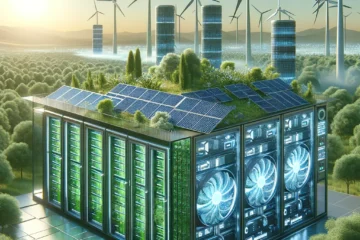The race to avert climate disaster is ongoing, and green cities stand at the forefront. Combining thoughtful urban planning with cutting-edge technologies, we can transform concrete jungles into lush, sustainable habitats for humans and nature alike. Let’s explore how this can be achieved.
Urban Planning for Sustainability
Urban planning plays a pivotal role in reducing carbon footprints. Effective planning strategies can enhance a city’s green infrastructure, from designing energy-efficient buildings to encouraging sustainable modes of transport.
1. Green Spaces
Urban green spaces such as parks, trees, and gardens, aren’t just places for relaxation. They serve as the city’s lungs, absorbing CO2 and releasing oxygen. Additionally, they help control urban heat, reducing the need for air conditioning.
2. Compact Urban Development
Compact urban design minimizes sprawl, placing homes, workplaces, and amenities within close proximity. This encourages walking, cycling, or using public transport instead of private cars, thus reducing carbon emissions.
3. Energy-Efficient Buildings
Implementing building codes that prioritize energy efficiency reduces power consumption. Passive design techniques like proper orientation, insulation, natural lighting, and ventilation can significantly reduce the need for heating and cooling.
Leveraging Technology for Greener Cities
Technological innovations offer new opportunities to lower carbon footprints in cities. Here are some ways technology is reshaping urban sustainability:
1. Smart Grids and Renewable Energy
Smart grids optimize energy distribution, reducing waste and increasing reliability. Furthermore, integrating renewable energy sources like solar, wind, and hydro power into the grid helps to cut down CO2 emissions.
2. IoT and Big Data
Internet of Things (IoT) devices collect vast amounts of data, allowing us to monitor and manage resources more effectively. For instance, smart meters can measure real-time energy use, helping households and businesses reduce consumption.
3. Electric and Autonomous Vehicles
Electric vehicles (EVs) offer a more sustainable alternative to conventional cars. Moreover, autonomous vehicles can be programmed for optimal driving efficiency, contributing to a decrease in carbon emissions.
4. Digital Twins
These virtual replicas of cities allow urban planners to test different scenarios and optimize for sustainability before implementing changes in the real world.
The Road to Green Cities
Creating green cities requires a systemic change in how we design, build, and live in urban spaces. It is about fostering a culture of sustainability, where every decision considers its environmental impact. It calls for innovative use of technology, policies that promote sustainable practices, and public participation to embrace greener lifestyles.
The task is huge, but the payoff is even larger – a healthier planet for current and future generations. By harnessing the power of urban planning and technology, we can reduce carbon footprints and transform cities into vibrant, sustainable environments.




